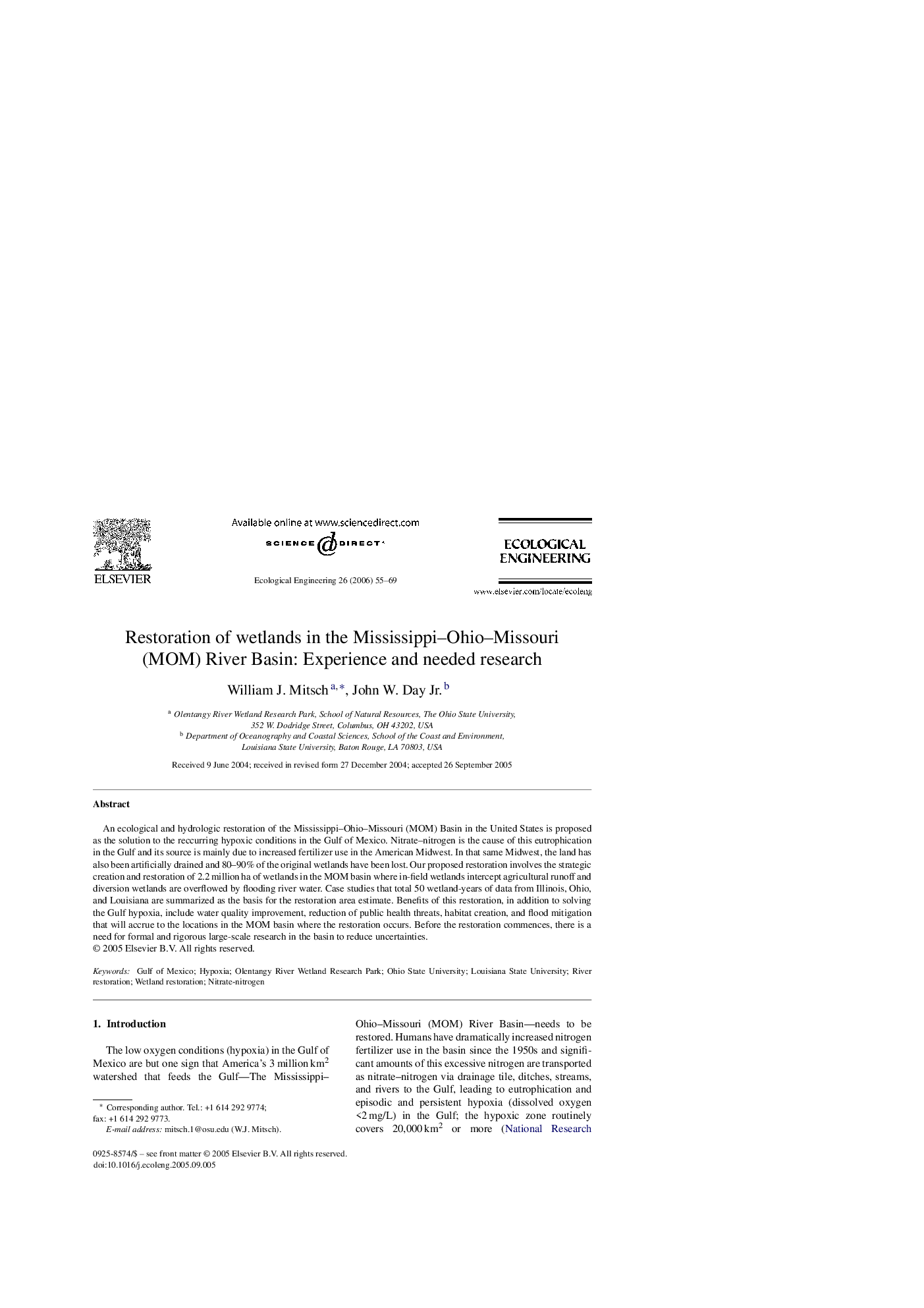| Article ID | Journal | Published Year | Pages | File Type |
|---|---|---|---|---|
| 4391309 | Ecological Engineering | 2006 | 15 Pages |
An ecological and hydrologic restoration of the Mississippi–Ohio–Missouri (MOM) Basin in the United States is proposed as the solution to the reccurring hypoxic conditions in the Gulf of Mexico. Nitrate–nitrogen is the cause of this eutrophication in the Gulf and its source is mainly due to increased fertilizer use in the American Midwest. In that same Midwest, the land has also been artificially drained and 80–90% of the original wetlands have been lost. Our proposed restoration involves the strategic creation and restoration of 2.2 million ha of wetlands in the MOM basin where in-field wetlands intercept agricultural runoff and diversion wetlands are overflowed by flooding river water. Case studies that total 50 wetland-years of data from Illinois, Ohio, and Louisiana are summarized as the basis for the restoration area estimate. Benefits of this restoration, in addition to solving the Gulf hypoxia, include water quality improvement, reduction of public health threats, habitat creation, and flood mitigation that will accrue to the locations in the MOM basin where the restoration occurs. Before the restoration commences, there is a need for formal and rigorous large-scale research in the basin to reduce uncertainties.
